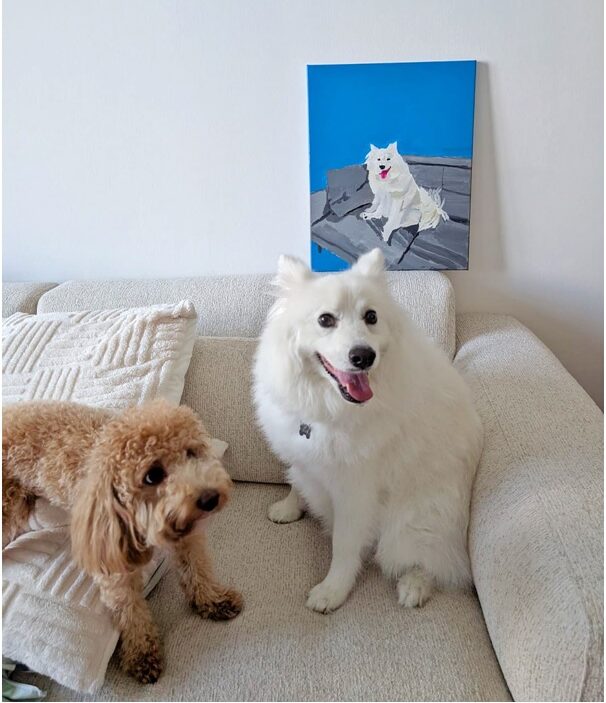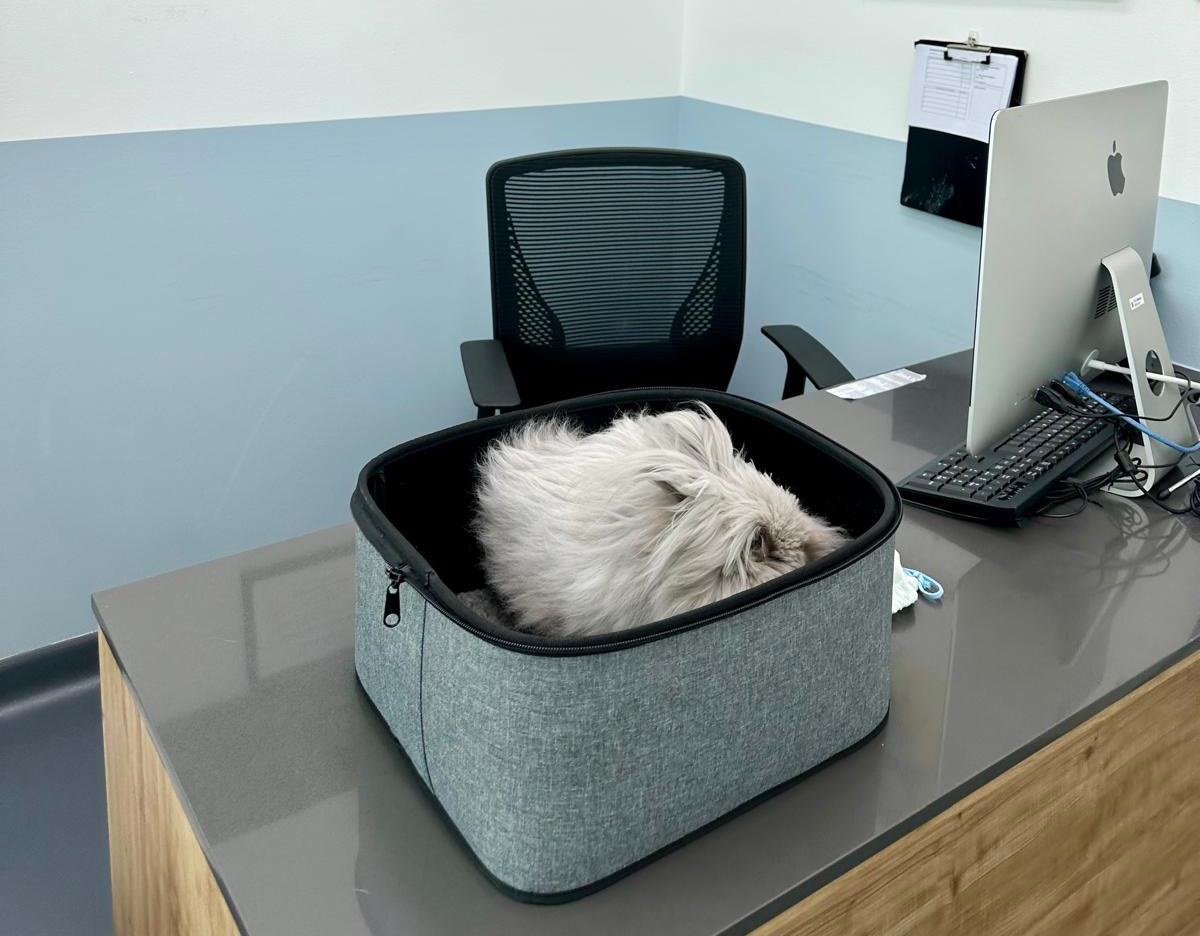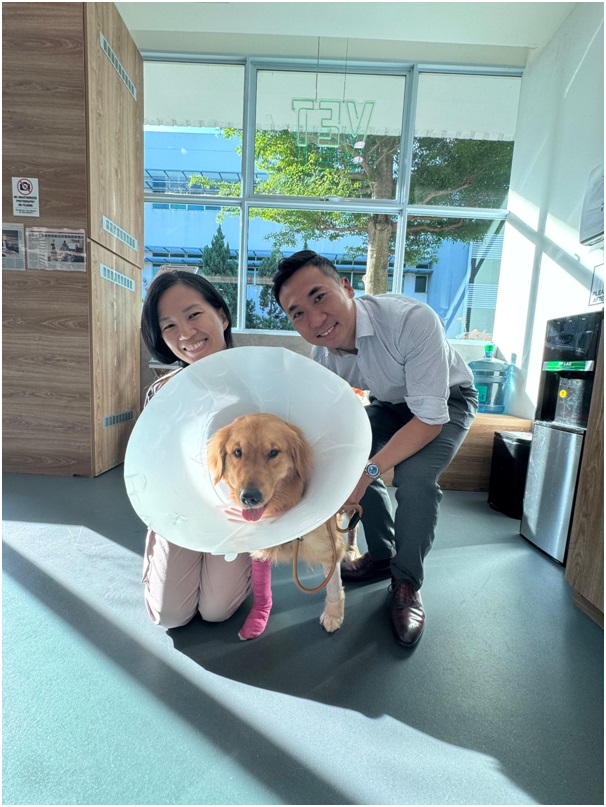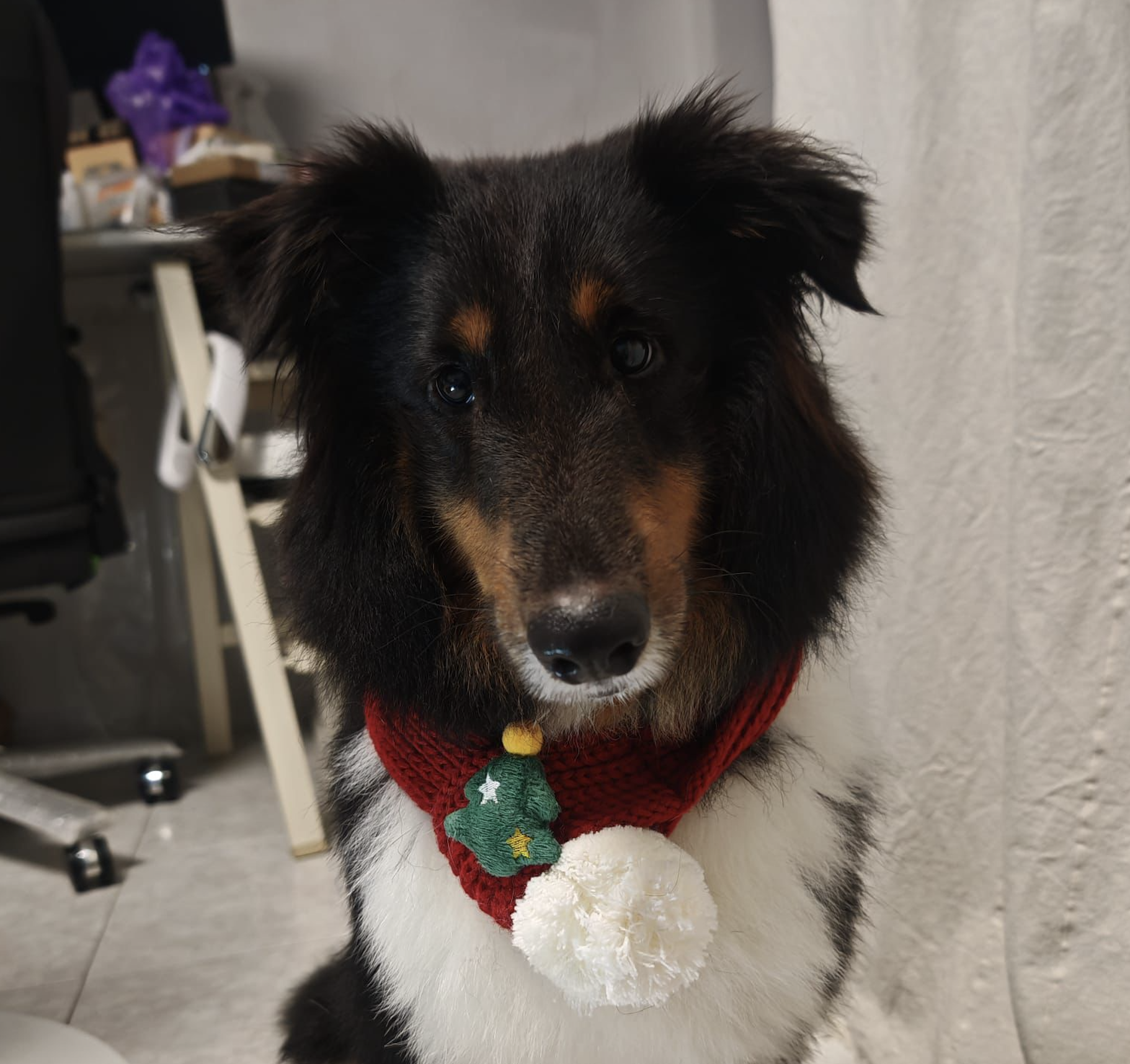When Richard noticed his usually aloof and naughty Siberian cat Toobie vomiting, he did not hesitate to rush his cat to the vet’s. At that point, Richard had no idea it was the start of a series of unfortunate events for Toobie and him.
“He is the alpha in my family of three cats and loves breaking things to get my attention”, he laughed. “Toobie has always been incredibly smart and aloof, which makes him special to me.”

Toobie the Siberian cat
A Troubling Turn
The initial diagnosis at the first clinic of simple nausea seemed reasonable. However, Richard grew concerned when Toobie began hiding in unusual places and drinking from the toilet that night. When Richard woke up the following day to see Toobie’s body twitching uncontrollably, he knew something was seriously wrong.
“I took him back to the same vet, but I wasn’t comfortable with their new diagnosis,” Richard recalled. “They sent us home to wait it out, but my instincts told me this was a crisis, so I immediately sought a second opinion at another clinic.”
The veterinarian at The Animal Clinic recognized the urgency of Toobie’s condition and made an emergency referral to Beecroft Animal Specialist & Emergency Hospital’s emergency and critical care service .
“It was incredibly stressful and traumatic,” Richard said. “But I knew I needed to control my emotions to think clearly about what Toobie needed.”
Emergency Intervention
By the time Toobie arrived at Beecroft’s emergency service, he was in critical condition. The 2.5-year-old Siberian cat had collapsed and became unresponsive.
Dr Nadine Jones , Beecroft’s board-certified emergency and critical care specialist, attended Toobie.

Toobie undergoing initial triage by the emergency team
The nursing team swiftly triaged him and transferred him to the intensive care unit for immediate assessment. Toobie’s vital signs were deeply concerning—he had extremely low blood pressure and severe hypothermia. The emergency team immediately initiated active warming while placing intravenous catheters to administer intravenous fluids.
An emergency ultrasound revealed that Toobie was suffering from hypovolemic shock. He also had a large stomach filled with fluid. And despite aggressive intravenous fluid therapy, Toobie’s blood pressure remained dangerously low. At one point during treatment, Toobie’s heart rate plummeted dramatically, requiring an immediate administration of life-saving drugs to bring his heart rate back up.
A formal abdominal ultrasound confirmed Dr Nadine’s suspicion of a blockage of the intestine, causing fluid to back up into the stomach.
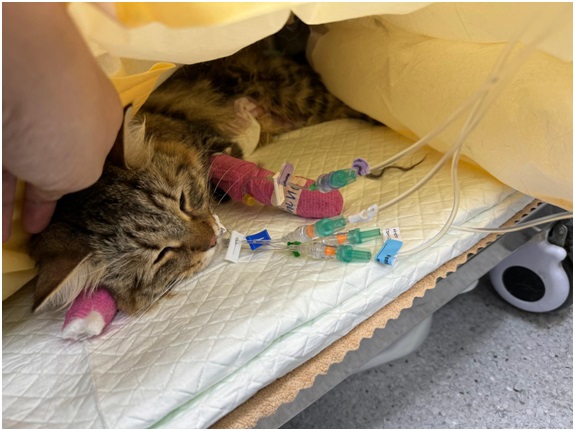
Toobie undergoing stabilisation protocols prior to surgery
“What stood out to me, for the first time in two days, was that I felt heard throughout the process, not treated like just another statistic,” Richard said. “I’ve had cats for 42 years, and I’ve been to enough hospitals to appreciate the difference.”
Life-Saving Surgery
With Toobie stabilized as much as possible, the surgical team performed an emergency exploratory laparotomy. They identified the culprit during the procedure—a fabric toy ball. The surgical team successfully removed the foreign body and thoroughly lavaged the abdominal cavity before closing.
“When Dr. Nadine came out to tell me they’d found a fabric ball, I was shocked,” Richard says. “I’m usually so careful about what toys the cats have access to, but somehow, this tiny thing got swallowed without me noticing.”
The Road to Recovery
However, once out of surgery Toobie was not out of the woods. He remained in a critical condition, requiring round the clock care in our intensive care unit. “When Toobie came out of surgery, he was just lying there like a dead cat, completely unresponsive,” he said.
Due to the expertise of the critical care team and the dedication of the nursing team, Toobie began to show signs of improvement. The critical care team continued to monitor his vital signs, manage his pain, and provide supportive care as he slowly regained his strength.
“Each day when I visited, he seemed a little more like himself,” Richard recalls. “By the third day, he seemed happy to see me walk into the ICU. That’s when I started to believe he might pull through.”
Healing at Home
When Toobie was finally stable enough to continue his recovery at home, Richard set up a spare room where he slept alongside Toobie every night, providing round-the-clock care and monitoring.
“He lost much weight during the ordeal,” Richard notes. “But what surprised me most was how affectionate he became. This normally aloof cat suddenly wanted to lie beside me all night, constantly purring.”
This period of unusual closeness was precious to Richard, though relatively short-lived. As Toobie regained his strength over the following ten days, his personality gradually returned to normal.
“Each day, he grew a little stronger; he also got a little bossier,” Richard laughs. “That’s when I knew my cat was truly returning to health.”

A recovered Toobie back to his bossy ways
Lessons Learned
The experience imparted valuable wisdom about pet safety and emergency care to Richard.
“I learned not to leave small items around that cats might swallow—rubber bands, strings, zip ties, and the such,” he cautioned. “And when your cat is in trouble, act fast and trust your instincts. Waiting it out isn’t a good idea.”
Today, Toobie is back to his old antics as the king of the household.
“Every time I see him curl up his body and sprint off waiting for me to chase him,” Richard says, “I’m reminded of how close I came to losing him—and how fortunate we were to find the right care at the right time.”
For referral, please reach us here.
